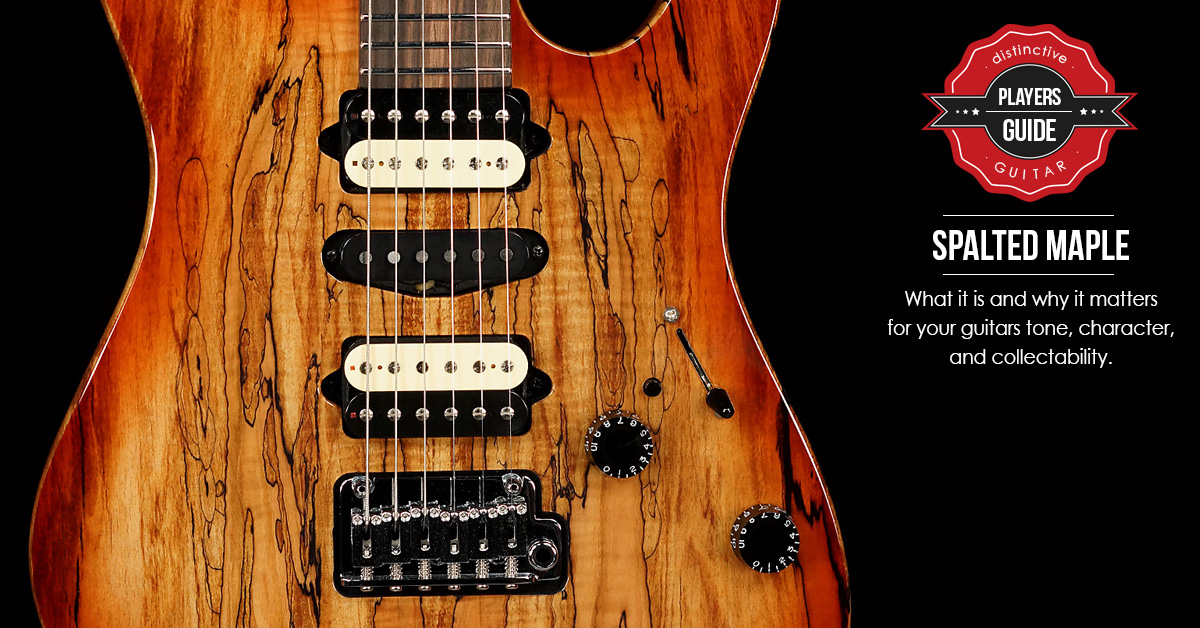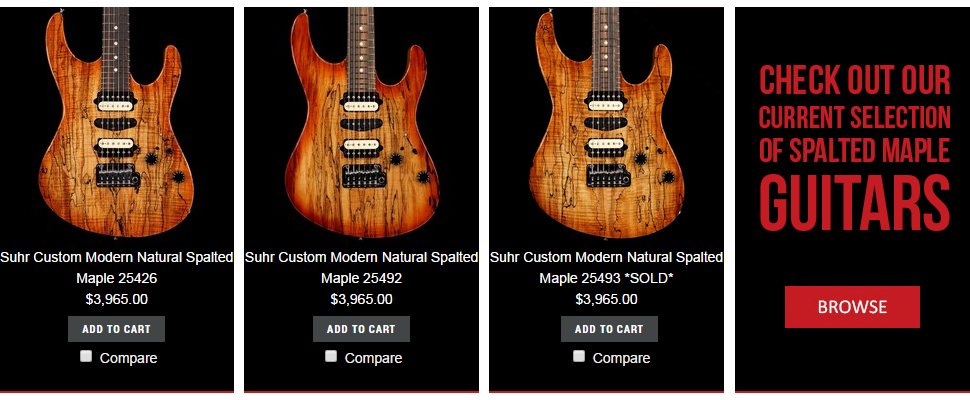
Unparalleled playability, first class craftsmanship, and rich tone help set many of today's boutique guitars apart from the rest. But it's not enough for a guitar to play and sound great, it has to look great too. Exotic tone woods help give these amazing boutique instruments the visual appeal they deserve. While most of us know about our 5A maple flame and quilt tops, there is one variation that we get asked about a lot: Spalted Maple. Here's a short guide on what spalted maple is and it's place in guitar building.
Like most maple, spalted maple is used as a veneer and typically paired with a mahogany body. It's unique appearance is due to fungus that invades the wood and creates distinct black striping called zone lines. These lines are built up by the fungus as a way to delineate itself from the rest of the wood or other fungi. While the lines don't weaken the wood, the fungus that creates them can. What makes spalted maple so rare in lutherie is it's narrow window of usability. The fungi needs to be present in the wood long enough to create an exotic spalting pattern, but if it remains too long it starts to degrade and soften the wood. A good luthier finds spalted maple that has excellent grain while still retaining it's original hardness and structural integrity. Wood like this isn't easy to come by and often carries a premium price tag compared to it's flame and quilt counterparts. Here's a breakdown on how spalted maple will affect your guitar's tone, character, and collectability.
LOOKS
As you can see, spalted maple can provide some truly stunning patterns and textures. High contrast between the spalting and normal grain can give a guitar a more dynamic three dimensional look. Being a difficult wood to find, spalted maple always makes for a unique and coveted instrument.
TONE
The spalting process doesn't change the tonal characteristics of the wood for the most part. Spalted maple has the same benefits as any other maple veneer. It's going to help create really tight lows and crystal clear highs, adding a nice level of clarity to the ends of the tonal spectrum and extend your instruments dynamic range. It pairs well with a mahogany body that is balanced and produces more mid-range. The one advantage you may find in spalted maple is greater sustain. The dryer the wood, the more resonant the tone, and because spalted wood has higher moisture content the drying process is much longer and more rigorous than standard maple, often creating a more complex top end and elongated sustain.
DURABILITY
Now if the whole idea of fungus eating your guitar has you a little leery, fear not. The spalted maple guitar you buy today will be just as strong twenty years from now. The fungus in the wood is stabilized and eliminated prior to construction. The fungi becomes stabilized when moisture is removed from the wood, a key component in properly drying and aging a guitar blank. This process can take a while in a high moisture wood like spalted maple, but it's well worth the wait.
Click the link below and check out our full selection of spalted maple guitars.

